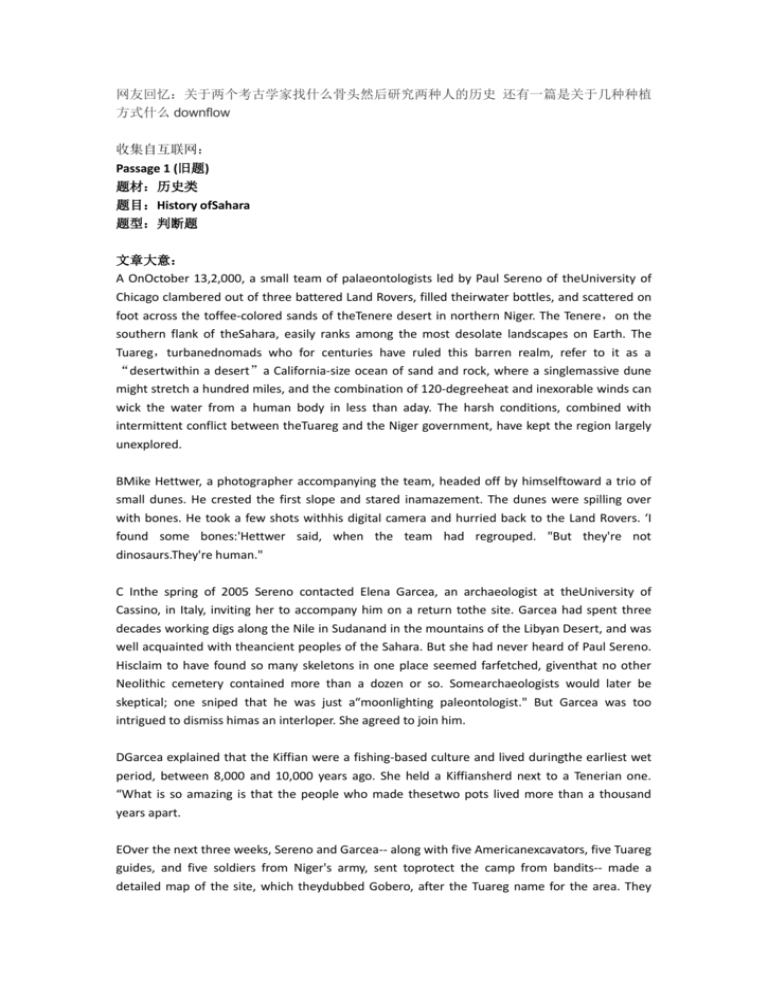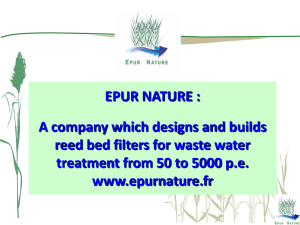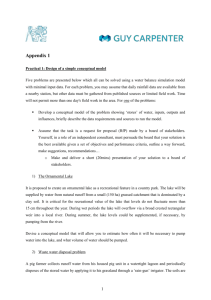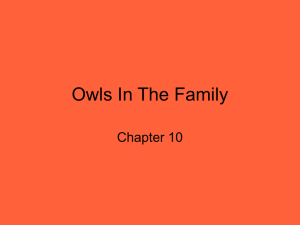网友回忆:关于两个考古学家找什么骨头然后研究两种人的历史 还有一
advertisement

网友回忆:关于两个考古学家找什么骨头然后研究两种人的历史 还有一篇是关于几种种植 方式什么 downflow 收集自互联网: Passage 1 (旧题) 题材:历史类 题目:History ofSahara 题型:判断题 文章大意: A OnOctober 13,2,000, a small team of palaeontologists led by Paul Sereno of theUniversity of Chicago clambered out of three battered Land Rovers, filled theirwater bottles, and scattered on foot across the toffee-colored sands of theTenere desert in northern Niger. The Tenere,on the southern flank of theSahara, easily ranks among the most desolate landscapes on Earth. The Tuareg,turbanednomads who for centuries have ruled this barren realm, refer to it as a “desertwithin a desert”a California-size ocean of sand and rock, where a singlemassive dune might stretch a hundred miles, and the combination of 120-degreeheat and inexorable winds can wick the water from a human body in less than aday. The harsh conditions, combined with intermittent conflict between theTuareg and the Niger government, have kept the region largely unexplored. BMike Hettwer, a photographer accompanying the team, headed off by himselftoward a trio of small dunes. He crested the first slope and stared inamazement. The dunes were spilling over with bones. He took a few shots withhis digital camera and hurried back to the Land Rovers. ‘I found some bones:'Hettwer said, when the team had regrouped. "But they're not dinosaurs.They're human." C Inthe spring of 2005 Sereno contacted Elena Garcea, an archaeologist at theUniversity of Cassino, in Italy, inviting her to accompany him on a return tothe site. Garcea had spent three decades working digs along the Nile in Sudanand in the mountains of the Libyan Desert, and was well acquainted with theancient peoples of the Sahara. But she had never heard of Paul Sereno. Hisclaim to have found so many skeletons in one place seemed farfetched, giventhat no other Neolithic cemetery contained more than a dozen or so. Somearchaeologists would later be skeptical; one sniped that he was just a“moonlighting paleontologist." But Garcea was too intrigued to dismiss himas an interloper. She agreed to join him. DGarcea explained that the Kiffian were a fishing-based culture and lived duringthe earliest wet period, between 8,000 and 10,000 years ago. She held a Kiffiansherd next to a Tenerian one. “What is so amazing is that the people who made thesetwo pots lived more than a thousand years apart. EOver the next three weeks, Sereno and Garcea-- along with five Americanexcavators, five Tuareg guides, and five soldiers from Niger's army, sent toprotect the camp from bandits-- made a detailed map of the site, which theydubbed Gobero, after the Tuareg name for the area. They exhumed eight burialsand collected scores of artifacts from both cultures. In a dry lake bedadjacent to t he dunes, they found dozens of fishhooks and harpoons carved fromanimal bone. Apparently the Kiffian fishermen weren't just going after smallfry: Scattered near the dunes were the remains of Nile perch, a beast of a fishthat can weigh nearly 300 pounds, as well as crocodile and hippo bones. F Sereno flew home with the most important skeletons and artifactsand immediately began planning for the next field season. In the meantime, hecarefully removed one tooth from each of four skulls and sent them to a lab forradiocarbon dating. The results pegged the age of the tightly bundled burialsat roughly 9,000 years old, the heart of the Kiffian era. The smaller“sleeping” skeletons turned out to be about 6,000 years old, well within theTenerian period. At least now the scientists knew who was who. G In the fall of 2006 they returned to Gobero, accompanied bya larger dig crew and six additional scientists. Garcea hoped to excavate some80 burials, and the team began digging. As the skeletons began to emerge fromthe dunes, each presented a fresh riddle, especially the Tenerian. A maleskeleton had been buried with a finger in his mouth. H Even at the site, Arizona State University bioarchaeologistChris Stojanowski could begin to piece together some clues. Judging by thebones, the Kiffian appeared to be a peaceful, hardworking people. “The lack ofhead and forearm injuries suggests they weren't doing much fighting,” he toldme. “And these guys were strong.” He pointed to a long,narrow ridge running along a femur. “That’s the muscle attachment, ” he said. “This individual had huge leg muscles, which means hewas eating a lot of protein and had a strenuous lifestyle-- both consistentwith a fishing way of life.” For contrast, he showed me the femur of a Tenerianmale. The ridge was barely perceptible. “This guy had a much less strenuouslifestyle,” he said, “which you might expect of a herder." I Stojanowski's assessment that the Tenerian were herders fits theprevailing view among scholars of life in the Sahara 6,000 years ago, whendrier conditions favored herding over hunting. But if the Tenerian wereherders, Sereno pointed out, where were the herds? Among the hundreds of animalbones that had turned up at the site, none belonged to goats or sheep, and onlythree came from a cow species. “It’s not unusual for a herding culture not toslaughter their cattle, particularly in a cemetery,M Garcea responded, noting that even modem pastoralists, such asNiger’s Wodaabe, are loath to butcher even one animal in their herd. Perhaps,Sereno reasoned, the Tenerian at Gobero were a transitional group that had notfully adopted herding and still relied heavily on hunting and fishing. JBack in Arizona, Stojanowski continues to analyze the Gobero bones for clues tothe Green Saharans’ health and diet. Other scientists are trying to derive DNAfrom the teeth, which could reveal the genetic origins of the Kiffian andTenerian — and possibly link them to descendants living today. Sereno andGarcea estimate a hundred burials remain to be excavated. But as the harshTenere winds continue to erode the dunes, time is running out. “Everyarchaeological site has a life cycle, ” Garcea said. “It begins whenpeople begin to use the place, followed by disuse, then nature takes over, andfinally it is gone. Gobero is at the end of its life.” 2. where the residents come from 游牧还是定居 3. 发现人类痕迹, A 发现痕迹一起 4. 发现人类骨架 5. 两类人 K 和 T,K taller 靠打渔为生 fishing Smaller T , 研究者 A draw a map 6. 研究者 B 研究牙齿,结果证明之前的结论 7. K features:骨头大,没有伤痕,强壮,和谐,大鱼,没有工具 8. T features:从工具(开始游牧) 9. T 不是完全游牧,两种 hunting 部分答案: What‘s a and bduring the weeks Map What they sendback Teeth What age taller 9000 Passage 2 题材:科技类 题目:Water treatment 2: Reed Bed 题型:判断题 3+填图题 3+补全段落选择 5+多选题 2 文章大意: Water Treatment 2: Reed Bed ANowadays subsurface flow wetlands are a common alternative in Europe for thetreatment of wastewater in rural areas. Mainly in the last 10 to 12 years therehas been a significant growth in the number and sizeof the systems in use. Compared to common treatment facilities, wetlands arelower in cost investment, lesser to maintain, and are ideal for denselypopulated rural or suburban areas rather than urban areas. B TheCommon Reed has the ability to transfer oxygen from its leaves, down throughits stem and rhizomes, and out via its root system. As a result of this action,a very high population of micro-organisms occurs in the root system, with zonesof aerobic, anoxic, and anaerobic conditions. Therefore with the waste watermoving very slowly and carefully through the mass of Reed roots, this liquidcan be successfully treated. C A straightforward definition of a reed bed is if you have dirtywater in your pool or water, which is heavily polluted, Reed Beds will beplanted to make the water clean again. This is good for ecology and livingorganisms and fish in the water. Reed Beds have a wide range of qualities andarc acceptable for cleaning everything from secondary to tertiary treatment ofmild domestic effluent, to rural waste and even heavy industrial contaminants.The reason why they're so effective is often because within the bed's rootsector, natural biological, physical and chemical processes interact with oneanother to degrade or remove a good range of pollutants. Reed beds can be builtin a number of variants, but mainly they are of the horizontal flow or vertical(down) flow configuration where water flows through the beds horizontally orvertically. D Horizontal-flow wetlands may be of two types: free-watersurface-flow (FWF) or sub-surface water-flow (SSF). In the former the effluentflows freely above the sand/gravel bed in which the reeds etc. are planted; inthe latter effluent passes through the sand/gravel bed. In FWF-type wetlands,effluent is treated by plant stems, leaves and rhizomes. Such FWF wetlands aredensely planted and typically have water-depths of less than 0.4m. However,dense planting can limit oxygen diffusion into the water. These systems workparticularly well for low strength effluents or effluents that have undergonesome form of pretreatment and play an invaluable role in tertiary treatment andthe polishing of effluents. The horizontal reed flow system uses a long reedbed, where the liquid slowly flows horizontally through. The length of the reedbed is about 100 meters. The downside of<4hc horizontal reed beds is thatthey use up lots of land space and they do take quite a long time to produceclean water. VERTICAL FLOW REED BED SYSTEMS E Avertical flow reed bed is a sealed, gravel filled trench with reeds growing init (see the picture below). The common reed oxygenates the water, which helpsto create the right environment for colonies of bacteria to break down unwantedorganic matter and pollutants. The reeds also make the bed attractive towildlife. How avertical flow reed bed works? F Invertical flow (downflow) reed beds, the wastewater is applied on top of thereed bed, flows down through a rhizome zone with sludge as substrate, then theroot zone with sand as substrate and followed by a layer of gravel fordrainage, and is collected in an under drainage system of large stones. Theeffluent flows onto the surface of the bed and percolates slowly through thedifferent layers into an outlet pipe, which leads to a horizontal flow bed andis cleaned by millions of bacteria, algae, fungi, and microorganisms thatdigest the waste, including sewage. There is no standing water so there shouldbe no unpleasant smells. GVertical flow reed bed systems are much more effective than horizontal flowreed-beds not only in reducing biochemical oxygen demanded (BOD) and suspendedsolids (SS) levels but also in reducing ammonia levels and eliminating smells.Usually considerably smaller than horizontal flow beds, but they are capable ofhandling much stronger effluents which contain heavily polluted matters andhave a longer lifetime value. A vertical Reed bed system works more efficientlythan a horizontal reed bed system, but it requires more management, and itsreed beds are often operated for a few days then rested, so several beds and adistribution system arc needed. H There are several advantages of Reed Bed Systems overtraditional forms of water treatment: first, they have low construction andrunning costs; second, they are easy management; third, they have an excellentreduction of biochemical oxygen demand and suspended solids; last, they have apotential for efficient removal of a wide range of pollutants. I Reed beds are natural habitats found in floodplains, waterloggeddepressions and estuaries. The natural bed systems are a biologically proved,an environmentally friendly and visually unobtrusive way of treatingwastewater, and have the extra virtue of frequently been better than mechanicalwastewater treatment systems. In the medium to long term reed bed systems are,in most cases, more cost effective in installment than any other wastewatertreatment. They arc robust and require little maintenance. They are naturallyenvironmentally sound protecting groundwater, dams, crocks, rivers andestuaries. Questions 14-16 TRUE/FULSE/NOT GIVEN 14 The Reed bed system is a conventionalmethod for water treatment in urban area. 15 In the reed roots, there’s a series ofprocess that help breakdown the pollutants. 16 Escherichia coli is the most difficultbacteria to be dismissed Question 17-19 (No more than three words) 部分答案: 判断题 14.FALSE 15.TRUE 16. NOT GIVEN 填图题 17.Sludge 18.sand 19.gravel 补全段落选择题 20.A 21.B 22.E 23.C 24.G 25.B 26.D 多选题 参考阅读: C9T3P2 Tidal Power Passage 3 题材: 商业类 题目:广告 题型:选择 5+Summary 4+判断 5 文章大意: 1.介绍时间从事公告 2. 4 种阶段作出广告 3.在这个人之前,文字叙述 language description,image picture 4. 列举 Case redmeat, 5. 自己的理念,basicconcepts,creativity,customs response 6. 尽管他的理念任然,但有些东西过时 参考阅读: C6T3P2 MotivatingEmployees under Adverse Conditions









